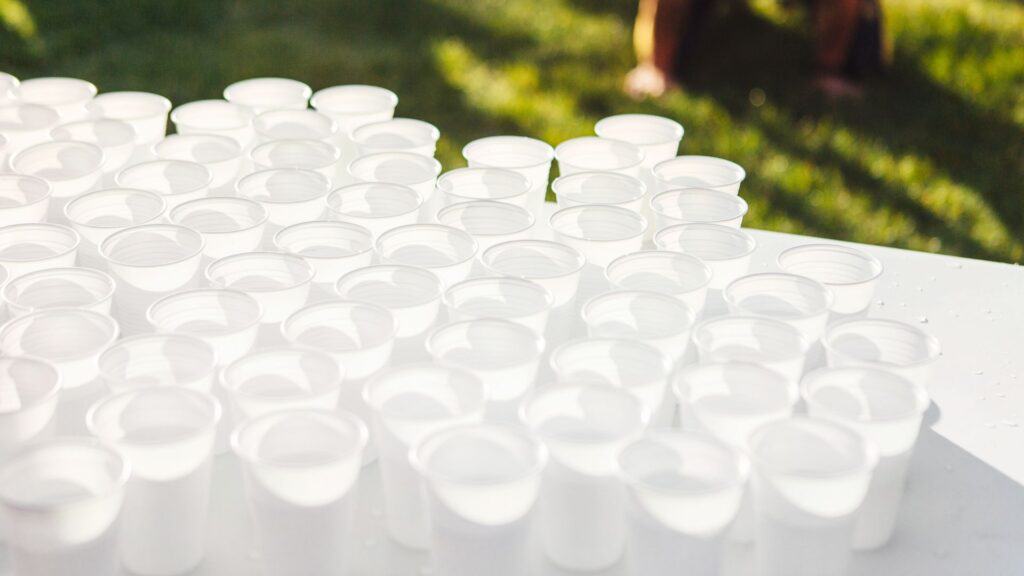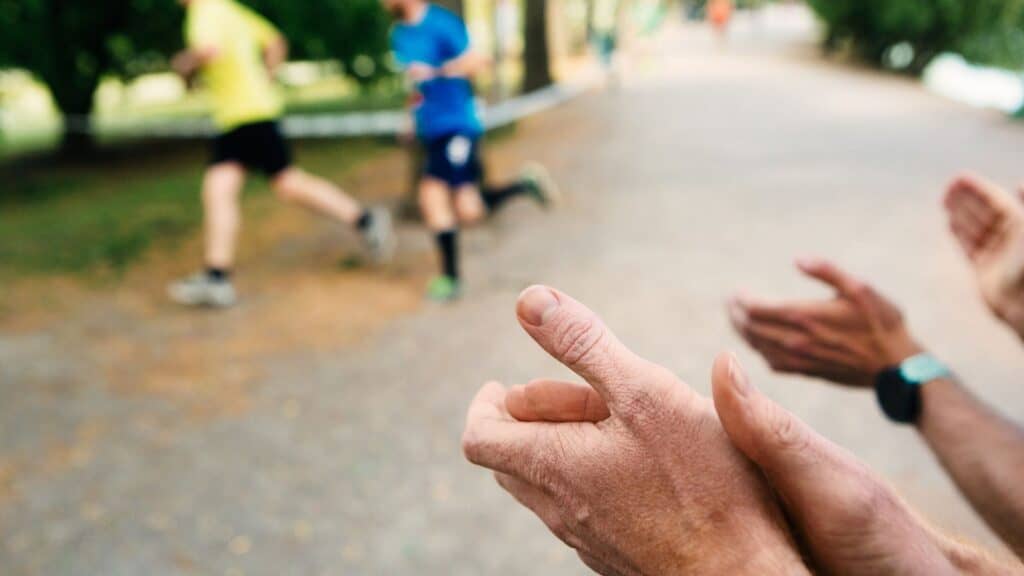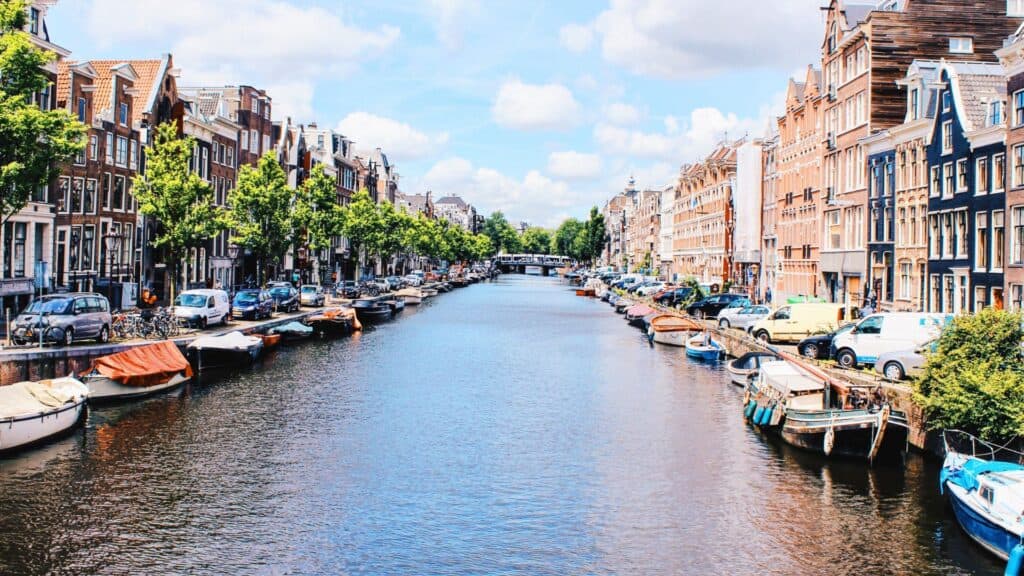The Amsterdam Marathon is just around the corner, and runners from around the globe are gearing up for the challenging 42.2 K (26.2-mile) race. Staying properly hydrated is absolutely essential for maintaining peak performance and feeling fantastic throughout the race.
But there’s no need to fret about what you’ll find at the water stations along the Amsterdam Marathon route – we’ve got all the details covered!
At various points along the course, you can expect to find a variety of offerings, including water, sports drinks, and even some refreshing fruits. Some stations go the extra mile by providing sponges soaked in cold water and having medical personnel on hand at these aid stations to assist with any injuries or medical concerns that may arise.
So, get ready to be excited, and let’s dive into what’s in store for you at those water stations!

Here’s What You’ll Find At Water Tables Along The Amsterdam Marathon route
During the Amsterdam Marathon, you can rely on strategically placed sponge and water stations that are dedicated to ensuring you stay well-hydrated and energized throughout the grueling race.
These stations go above and beyond to cater to your needs, offering a variety of essentials to keep you going.
At key points along the route, including the 5 K, 11.5 K, 15.5 K, 20 K, 26 K, 31 K, 33 K, 35 K, 38.5 K, and 40.5 K markers, as well as at the glorious finish line, you’ll find hydration and replenishment stations.
Here, you can expect to receive essential items such as water, AA Drink Iso Lemon sports energy drink in convenient 0.15L (5.1 fluid oz) cups, and delightful bananas to fuel your journey. These stations are also equipped with restroom facilities and first-aid services to address any unforeseen needs.
However, it’s important to note that not all stations will offer the same provisions.
For example, the stations at 33 K (20.5 miles) and 40.5 K (25.2 miles) may not have the AA Drink Iso Lemon, while the stations at 5 K (3.1 miles), 33 K (20.5 miles), and 40.5 K (25.2 miles) may not provide bananas.
Now, let’s take a quick look at what makes AA Drink Iso Lemon a fantastic choice for marathon runners.
What You Need To Know About The AA Drink Iso Lemon At The Amsterdam Marathon Water Tables
This specially formulated energy drink is designed to help you maintain your fluid and energy balance during the demanding race.
Packed with vital vitamins such as B3, E, B5, B6, and H, it not only keeps you hydrated but also supports your immune system and metabolism.
During the race, you’ll receive AA Drink Iso Lemon in convenient 0.15 L (5.1 fluid oz) cups. To top it all off, at the finish line, you will get a refreshing 0.33 L (11.1 fluid oz) bottle of AA Drink Iso Lemon to celebrate your triumphant accomplishment.
But remember the golden rule, “Stick to what you’ve practiced during your training. NO NEW THINGS ON RACE DAY”
While the Amsterdam Marathon offers a variety of hydration and fuel options along the course, it’s essential to tailor a strategy that suits your individual needs for peak performance.
To ensure you’re making the most of your race day experience, let’s explore the guidance from experts on how to effectively manage marathon hydration.
How To Properly Hydrate For The Amsterdam Marathon
Proper hydration during exercise plays a crucial role for several reasons.
First and foremost, it helps eliminate waste products produced by working muscles. Secondly, it supports the transportation of oxygen and essential nutrients to muscles, thus optimizing overall performance.
Moreover, maintaining proper hydration is essential for regulating body temperature, which is particularly vital during a marathon.
Dehydration begins as soon as you start running because roughly 75% of the energy expended during exercise generates heat, leading to fluid loss.
Individual hydration requirements can vary based on factors such as sweat rate and are influenced by variables like heat, humidity, and exercise intensity.
Effective marathon hydration requires careful preparation well in advance.
Start by focusing on maintaining good hydration levels at least 48 hours before the race. Begin sipping water—around 600 mL (20.2 fluid oz)—three to four hours before the race begins and continue until your urine is clear.
If it’s not clear, consume an additional 400 mL (13.5 fluid oz) of water.
Avoid the temptation to drink a full liter of water just before the race, as this can dilute your sodium balance, cause bloating, and lead to excessive bathroom breaks during the race.
Proper hydration planning is essential to ensuring peak performance and endurance on marathon day.

How Often Should You Hydrate During The Amsterdam Marathon?
You should aim to sip between 400 ml to 800 ml (that’s about 13.5 to 27.1 fluid oz) of water every hour.
However, this should be adjusted based on individual factors such as thirst, exercise intensity, and environmental conditions.
During your training, especially those long runs, it’s a good idea to figure out how much water your body needs to stay properly hydrated.
You can do this nifty trick: check your weight before and after a long run. If you’ve lost more than 2 percent of your body weight, or if your urine looks like dark orange juice, that’s a red flag.
It probably means you’re dehydrated, especially the first-morning tinkle. In that case, grab something with a bit of sodium and give it about 20 to 30 minutes to work its magic.
Now, I know not everyone can pre-hydrate because of those pesky early morning runs. But if you can, try knocking back around 500 ml (that’s about 16.9 fluid oz) of fluids an hour before you hit the pavement.
Having a bit of liquid in your stomach can help your body distribute the fluids more effectively to the necessary areas, and that’s always a plus. We like to call it running with a “residual volume of fluid.”
Ever wondered how the elites like Eliud Kipchoge handle their hydration game? Here’s what you need to know…
How Elite Runners Hydrate For Marathons
Some interesting research from the London Marathon revealed that despite organizers giving out advice on avoiding hyponatremia (that’s when your sodium levels drop too low in your blood), about 12% of runners still planned to drink enough fluids to put them at risk.
And get this, a whopping 93% of those runners said they read and understood the hydration info package!
Quick side note: Hyponatremia can cause nausea, headaches, confusion, and fatigue. Not exactly the best companions for a marathon, right?
Now, onto how elite athletes tackle hydration. They usually plan to sip every 5 km (3.1 miles) and often toss back some gels around the 10-15 km (6.2 – 9.3 miles) and 25-30 km (15.5-18.6 miles) marks.
Sipping every 5 km (3.1 miles) sounds pretty intense, doesn’t it? Well, we reckon it’s crucial to watch the amount of liquid you gulp down to avoid going overboard.
If you’re into those energy gels, remember to wash them down with water. It helps your tummy handle them better.
Now, let’s chat about your hydration game plan:
Hydration Before The Amsterdam Marathon:
- Don’t just chug tons of water leading up to the race; it can up your hyponatremia risk.
- Consider sipping on an electrolyte drink the night before the big run to boost your blood plasma volume.
- Aim to gulp down about 2-3 ml (0.07 -0.1 fluid oz) of fluids per pound of body weight at least 4 hours before you lace up those running shoes.
Hydration During The Amsterdam Marathon:
Personalize your hydration plan for your body; everyone sweats out different levels of sodium.
Relying solely on water during long, sweaty stretches can dilute your sodium levels, messing with your performance and potentially leading to hyponatremia.
While there are those handy water stations along the course, they’re not there for you to stop at every single one. Think back to your training runs: how much fluid did you typically consume?
Try to match that during the marathon, adjusting based on how thirsty you are and the weather conditions.
Only pause for drinks and fuel breaks as you’ve practiced during your training. Stick to the plan!
Will There Be Energy Bars and Gels Along The Amsterdam Marathon?
You won’t find any energy bars or gels at the refreshment stations, so if you rely on these, be sure to bring your own.
What Is The Amsterdam Marathon Course Time Limit?
The TCS Amsterdam Marathon has a strict time limit of 6 hours. The finish line at the Olympic Stadium closes precisely at 17:00 hours.
To help you keep track, here are the checkpoints you should aim for:
5 km (3.1 miles): You should reach this point by 10:12 hours.
10 km (6.2 miles): Aim to be there by 10:54 hours.
15 km (9.3 miles): Target time is 11:36 hours.
20 km (12.4 miles): Push to make it by 12:19 hours.
25 km (15.5 miles): You should arrive by 13:01 hours.
42.2 km (26.2 miles): Absolutely make sure you cross this point by 17:00 hours.
Will There Be Any Digital Clocks Along The Amsterdam Marathon?
Digital clocks will be present at the start and at various kilometer points. Your time will be recorded every 5 kilometers, and there will be boards at each kilometer marker to help you keep track of your progress.

The Sweeper Vehicle
If you’re overtaken by the sweeper vehicle, based on the passing-time table, you’ll be asked to leave the race for safety reasons and hop into the broom wagon.
If you choose to continue despite this request, you’re doing so at your own risk. Just remember, once the broom wagon passes, the course opens to traffic again.
Water and medical care points will also be removed, and you won’t be eligible for a medal if you’re removed from the race.
So, keep these time limits in mind, and stay on track to achieve your marathon goals!
Here are some handy tips to ensure you stay efficient and don’t waste precious time at each station…
Tips For Efficiency At Water Stations Along The Amsterdam Marathon
- Stick to Your Plan: Before the race, establish a clear hydration and fueling plan based on your personal needs and race strategy. Stick to this plan at each station to avoid confusion and ensure you get what you need without wasting time contemplating options.
- Plan Ahead: As you approach each station, take a quick glance at the setup ahead. Position yourself on the correct side of the road so that you can smoothly transition through the station without having to zigzag through the crowd. This minimizes unnecessary weaving and helps you maintain your pace.
- Slow Your Pace: Instead of coming to a complete stop at the station, reduce your pace slightly. This allows you to maintain forward momentum while reaching for your drink or fuel. Slowing down ensures you can grab what you need without fumbling or risking collision with other runners.
- Sip, Don’t Guzzle: When you grab a drink, resist the urge to gulp it down all at once. Instead, take small, controlled sips. Drinking slowly not only prevents discomfort but also allows your body to efficiently absorb the fluids and nutrients you’re taking in.
- Dispose of Trash Responsibly: After consuming your hydration or fuel, be considerate of others and the environment. Look for designated bins or areas to discard your cups. Keeping the course clean ensures a pleasant experience for all runners and minimizes hazards.
- Stay Cool: On warmer race days, consider using some of the leftover water from your cup to cool yourself down. Pouring water on your neck, head, or even over your wrists can help regulate your body temperature and keep you feeling refreshed.
- Avoid the Crowds: Many runners instinctively head for the first table at each station, causing congestion and delays. To save time and avoid the rush, aim for tables toward the end of the station. These are often less crowded, allowing for a smoother and quicker experience.
By following these detailed tips, you’ll navigate the marathon hydration and fuel stations with precision, ensuring you stay on track for a successful race day!



Comments are closed.